Archaeological sub-collection
The founder of the archaeological sub-collection of the Vyškov Regional Museum is Vojtěch Procházka, the administrator of the Regional Museum in Vyškov and the Managing Director of the State Institute of Archeology in Prague, professor at the Vyškov Secondary Grammer School. Together with another promoter of museum activities in the Vyškov Region, MUDr. Jan Zháněl, Procházka led excavations at Melice Castle between 1931 and 1938, which yielded a large collection of findings that form a significant part of the sub-collection. The third important contributor was amateur archaeologist Gabriel Křivánek, whose name is mainly associated with the findings from Markov Brickworks in Vyškov.
The first inventories of these items were made by Vojtěch Procházka. In the 1960s, the items were re-sorted and re-inventoried. Systematic formation of the sub-collection did not start until 1973 when the archaeological workplace was professionalised.
Due to its favourable geographical and climatic conditions, the region has been a popular settlement area since prehistoric times, which is reflected in the number of archaeological findings. Their occurrence increased especially at the beginning of the 21st century in relation to the construction of industrial zones and the development of the next section of the D1 motorway. The sub-collection includes a wide range of objects from the prehistoric, medieval, and modern ages, which were obtained through archaeological excavations and prospecting.
The oldest period represented in the sub-collection is the Middle Palaeolithic (250,000 – 40,000 BC). Chipped bone and stone tools and skeletal remains of fauna (mammoth, cave bears, rhinoceroses, reindeer) have been preserved from this era. The variability of the inventory increased with the arrival of the first farmers (Neolithic, 5,600 – 4,500 BC). Clay products (ceramic vessels, sculptures, evidence of textile production – spindle whorls, weights), cut and drilled stone tools, stone grinders (for grinding grain), and the remains of clay rubble from the walls of houses (masonry) were added. Unique from this period is a vessel with a fabric impression from Luleč (Linear Pottery culture). A further increase in the variety of finds occurred in connection with the spread of metals – first copper (Eneolithic; 4,500–2,000 BC), then bronze (Bronze Age; 2,000 – 800 BC), and finally iron (Hallstatt; 800–370 BC). In addition to jewellery (bracelets, hair ornaments, pendants), clothing components (belts, clasps – needles and pins), harnesses, weapons (knives, daggers, swords) and tools (sickles, ploughshares), artefacts related to metalworking (moulds – clay and stone, crucibles – metal casting pans) have been preserved. Bone ornaments and combs, shell pendants, amber beads, glass, gold and silver jewellery, building ceramics (tiles, bricks), and architectural articles are also an integral part of the collection.



